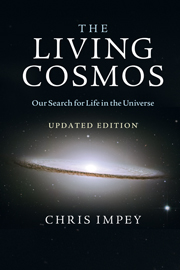PREFACE TO THE PAPERBACK EDITION
Published online by Cambridge University Press: 05 August 2011
Summary
SinceThe Living Cosmos was first published in 2007, astrobiology has been in a ferment of activity. The search for life in the universe is highly interdisciplinary, and one of the best signs of the subject's rude health is the vigorous debate and questioning (with touches of incomprehension) between astronomers, geologists, chemists, and biologists at any major meeting. A young cohort of researchers who brand themselves as astrobiologists is making its way through the ranks, and is already making its mark. The research community is becoming steadily more international. Whether the topic is the exploration of Mars, extremophiles on Earth, exoplanets, or SETI, astrobiology has shown the power to capture the public's attention and fuel its imagination.
And yet, we still only know of one place in the universe with life. Does this mean astrobiology is a failure? What's the status of this young and exciting field?
The greatest progress has been made on exoplanets. The detection limit has steadily marched downwards in mass to approach the mass of the Earth. Very few of the super-Earths found so far are habitable, in a traditional sense of being able to have liquid water on their surfaces, but the Kepler satellite is poised to deliver the census of Earths. The number of exoplanets has more than doubled since this book first appeared. Exoplanet research has moved beyond counting bodies to characterizing planets and comparing observations to sophisticated models of geology and atmospheric chemistry.
- Type
- Chapter
- Information
- The Living CosmosOur Search for Life in the Universe, pp. xiii - xivPublisher: Cambridge University PressPrint publication year: 2011



